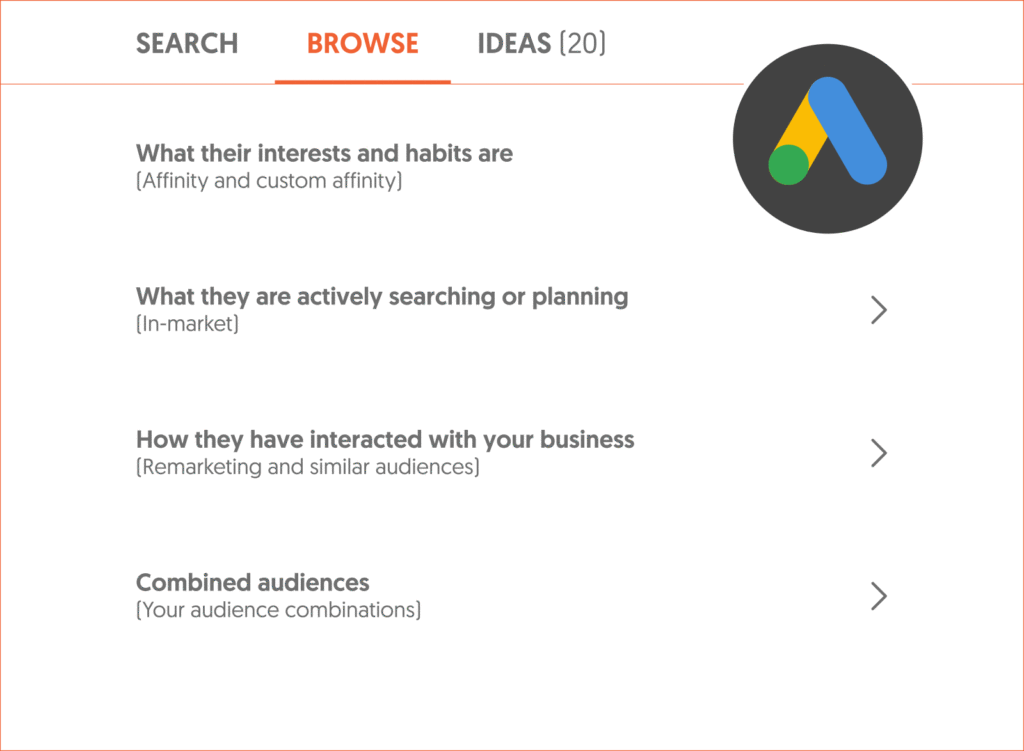Start Here: Google Ads Combined Audiences
New to PPC, or still picking up the more advanced areas of the channel? Read on below for our primer on Google’s Combined Audiences for Search feature.
Sign up to our free Google Ads email course.
7 days, 7 lessons. Everything from how to structure your Google Smart Shopping campaigns to ad testing, and YouTube ads excellence. Sign up and level up your Google Ads eCommerce game.
What is Combined Audiences for Search?
Combined Audiences for Search is a Google Ads feature that allows advertisers to combine various audience attributes, such as in-market audiences, remarketing lists, and affinity audiences, so to create in-depth personas that can be applied to search campaigns.
How does it work?
Whereas keyword targeting will always be a core part of paid search, layering audiences allows for greater ad personalisation and insights into user behaviour.
There are several audience types that can be applied to search campaigns, in order to improve targeting and overall relevancy:
In-Market Audiences
In-market audiences consist of Google users who are ‘in-market’ for specific products and services, and therefore may be more likely to to buy. Available in-market audiences include Apparel and Accessories, Autos & Vehicles, Baby & Children’s Products, Beauty Products & Services, Business Services, Computers & Peripherals, Consumer Electronics, Consumer Software, Dating Services, Education, Employment, Financial Services, Gifts & Occasions, Home & Garden, Real Estate, Sports & Fitness, Telecom, and Travel.
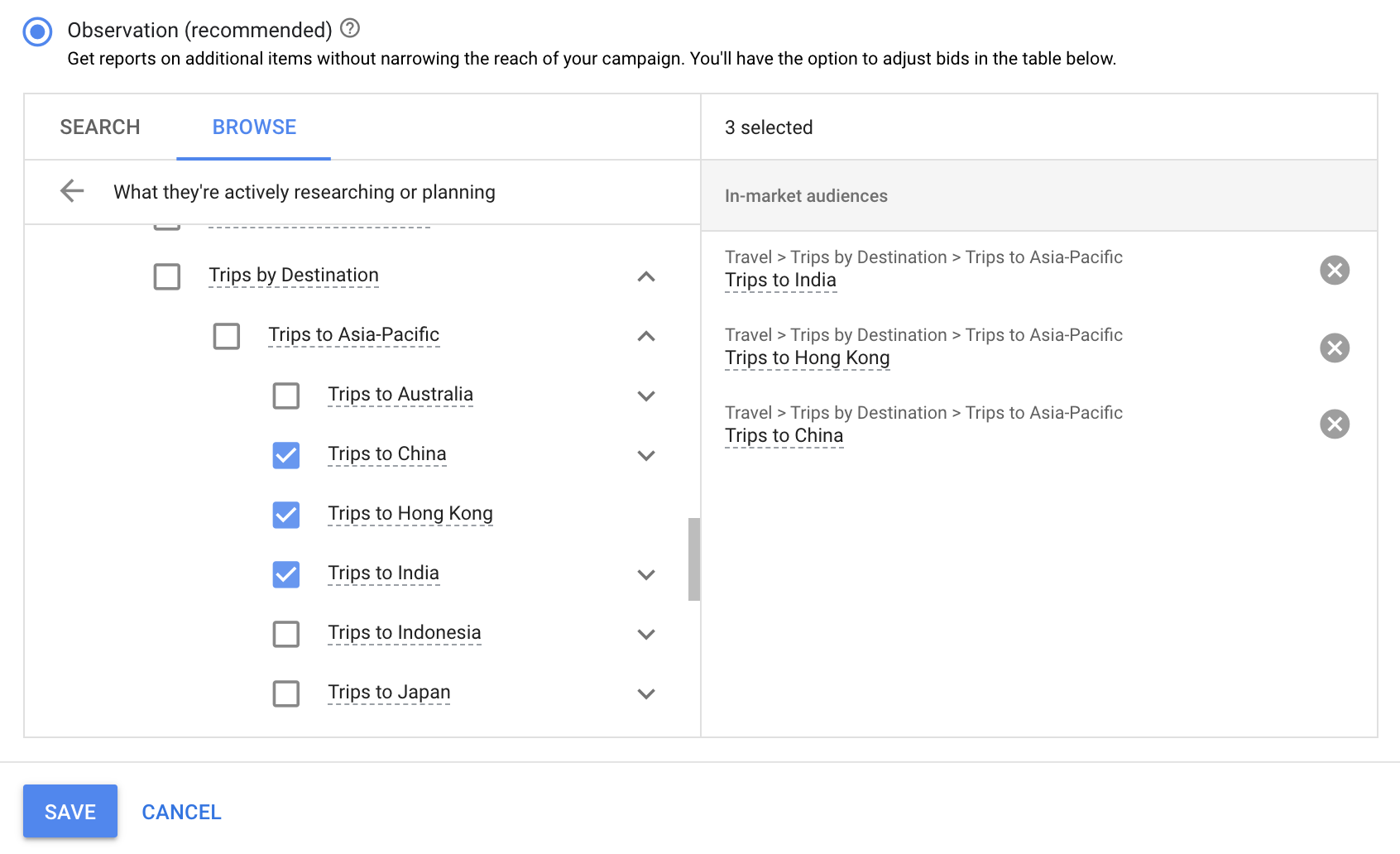
Affinity Audiences
Affinity audiences are slightly broader than in-market, as it reaches users based on lifestyles, passions, and habits. With over 80 unique personas based on lifestyle and interests, affinity audiences mimic the depth and breadth of TV-style audiences, so marketers can engage with precise audiences at scale.
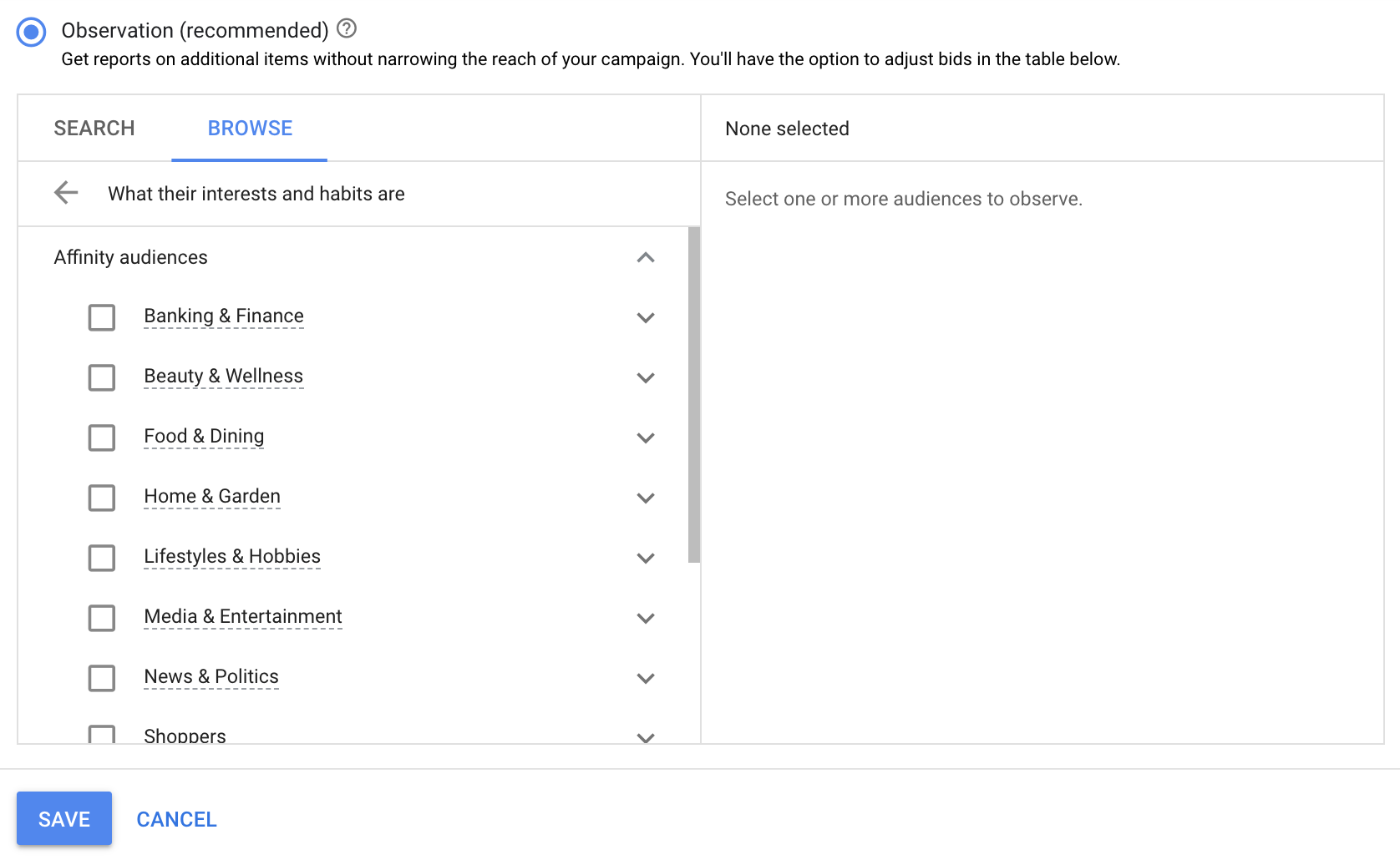
Detailed Demographics
Google has long allowed advertisers to view and target users by demographics with bid modifiers based on age, gender, and household income. In the past couple of years, Google has gone further by introducing detailed demographics. They are Parental Status, Marital Status, Education, and Homeownership Status.
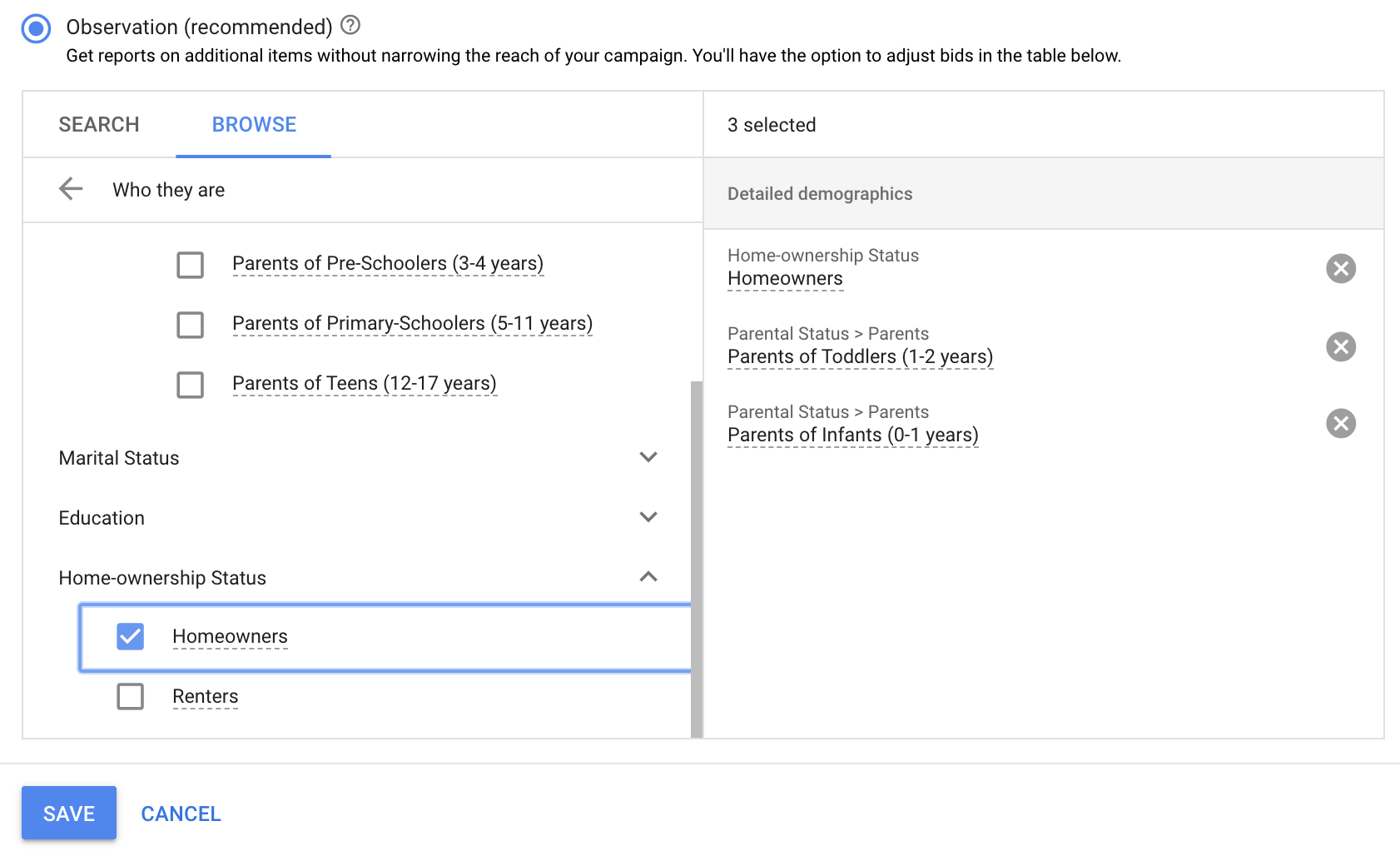
Similar Audiences
Facebook has lookalikes, Google has similar audiences. For Google, this is where it targets users who have similar search behaviour to users in your remarketing lists. Google is vague as to what determines ‘similar search behaviour’, but if you are looking for new customers, and already have extensive remarketing lists set up, then this type of audience is certainly worthwhile testing.
Remarketing Lists
When it comes to convincing the people who visit your site to take action and convert, one visit is typically not enough. Remarketing gives you a chance to bring back indecisive customers with tailored ads and offers that relate to the experience they had on your site. You can create remarketing lists based on website visitors, YouTube users, or customer data in the shape of CRM data.
Combined Audiences for Search
Previously, audience lists were pretty much standalone, with limited ability to combine or narrow targeting in order to achieve maximum relevancy. Then, in October 2019, Google launched Combined Audiences for Search, allowing advertisers to create various audience combinations, blending a range of sources including affinity, in-market, remarketing, similar audiences, and detailed demographics.
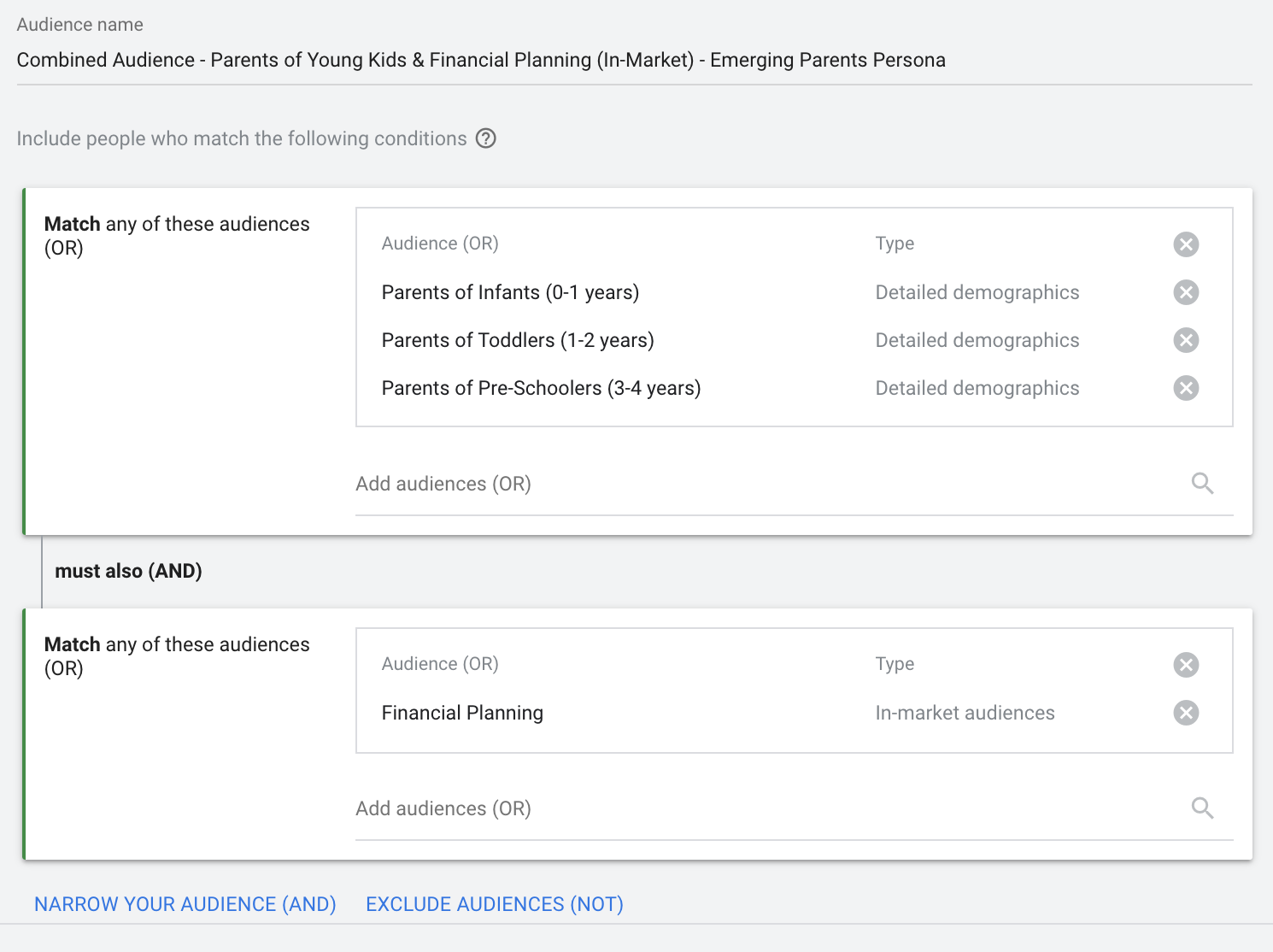
How to use it?
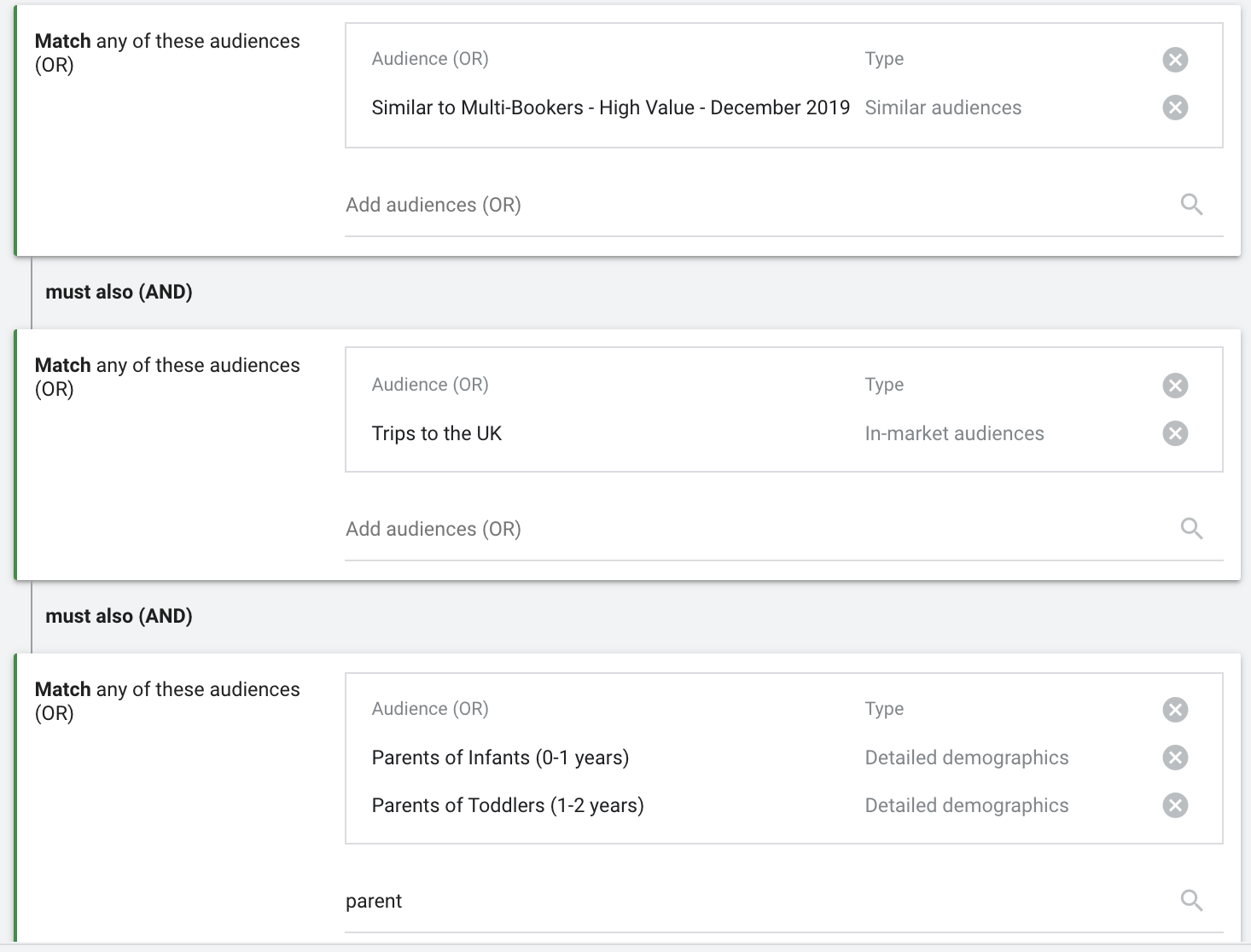
In similar vein, health tech brands like Fitbit can create audience grouping around some of its core target segments. Below is a combined audience targeting a persona that is interested in both running and technology:
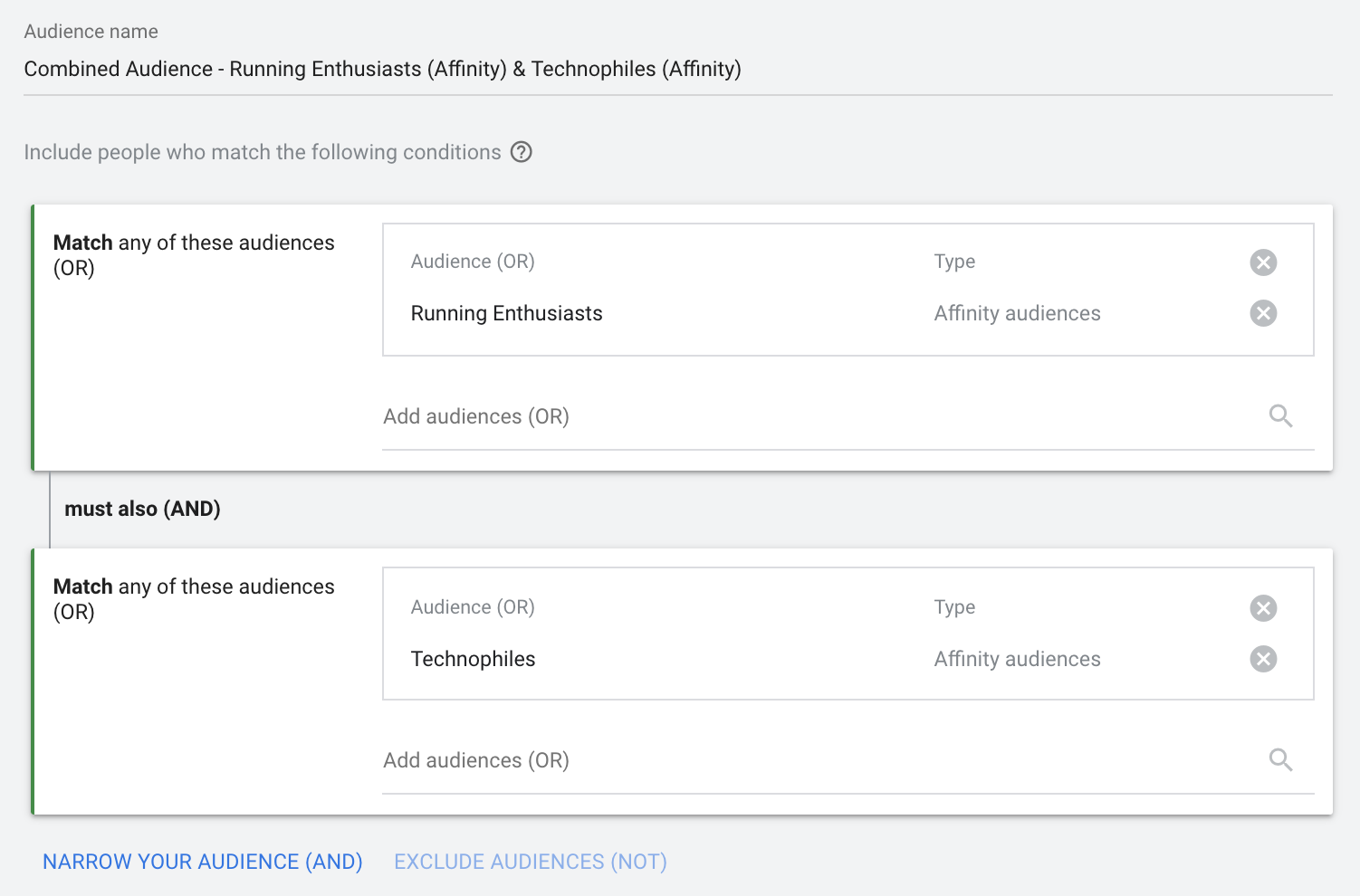
Note that combined audiences must have at least 1,000 members to become active. Google won’t serve ads against audiences that don’t meet that threshold.
What kind of uplift can I expect?

Taking it to the Next Level
Rule 1: Match combined audiences to customer personas

Rule 2: Add to all campaigns
Client Case Study: Consumer Electronics Brand
A UK-based consumer electronics brand implemented Combined Audiences for Search as an observation audience across their search campaigns. After it quickly became apparent that these audiences were performing above-average, specific campaigns were created just for these users, with bespoke ad copy and landing pages.
After an initial four week period, CTR across these audiences was 10.63% vs. an account average of 6.63%, with Cost per Conversion some 10% lower than the search campaign average.
Rule 3: Don't go too granular
With so many audience combinations possible, the temptation can exist to go super-granular with your audiences, in order to create the perfect profile of target customers. However, be warned: if you go too deep with combined audiences, your audience size will become too small. Once this happens, you’ll see limited impressions and clicks.

